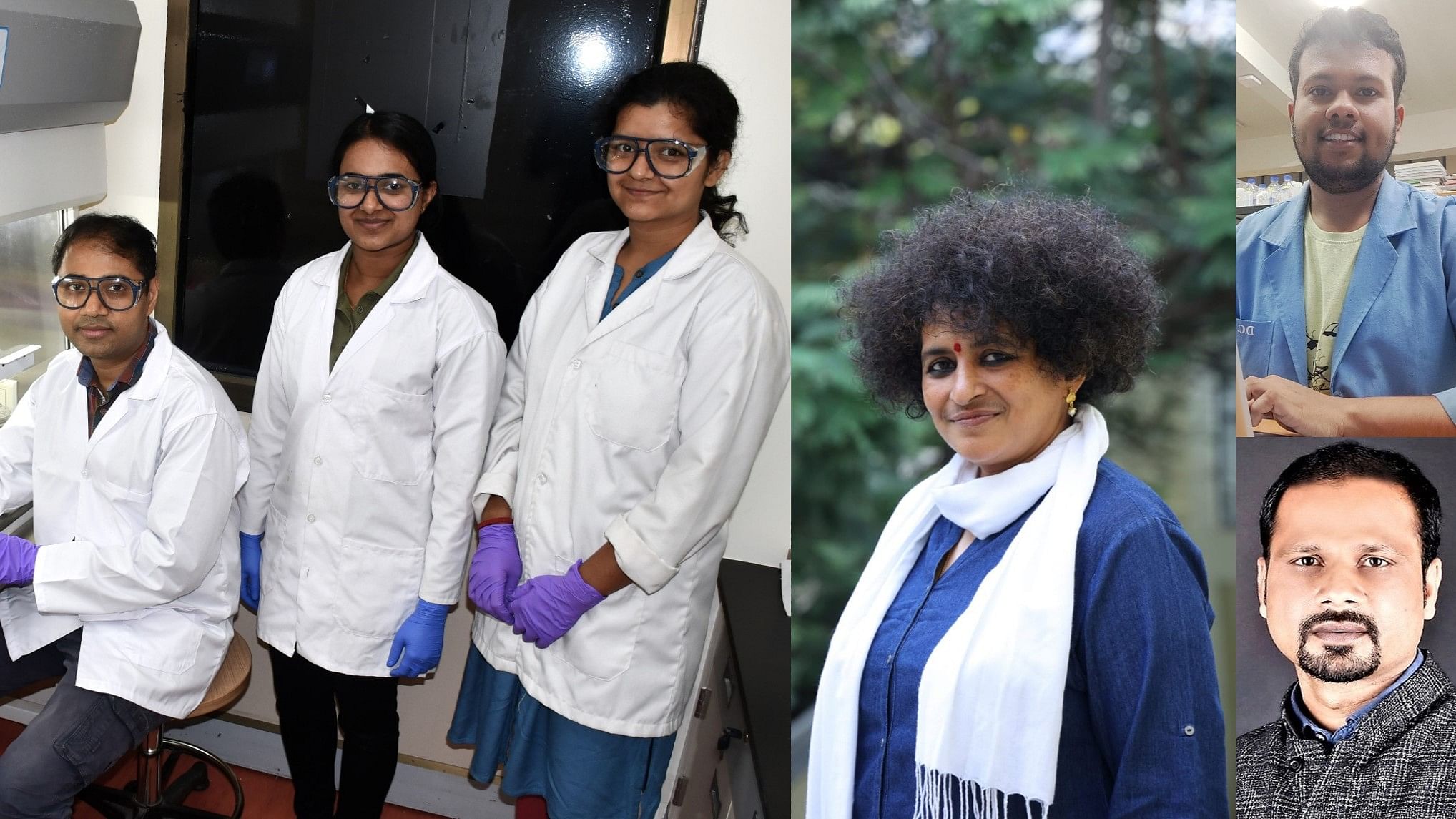
The research team (from left to right): Debasis Das, Reshma Ramakrishnan, Kirti Parmar, Dipshikha Chakravortty, Abhilash V Nair, and Raju S Rajmani.
DH Special Arrangement
Bengaluru: A team of scientists at the Indian Institute of Science (IISc), Bengaluru, has developed a method to break down the biofilm barrier around pneumonia-causing bacteria using an enzyme derived from the cow's digestive system, enhancing the effectiveness of antibiotics and immune response.
Disease-causing bacteria often form complex layers called biofilms, which act as protective barriers, reducing drug entry and contributing to antibiotic resistance.
Among these bacteria is 'Klebsiella pneumoniae', an opportunistic pathogen commonly found in hospitals that can lead to pneumonia, urinary tract infections, meningitis, and slow-healing wound infections. In diabetic patients, such infections can lead to severe complications, including amputation.
The researchers from IISc's departments of Microbiology and Cell Biology, and Inorganic and Physical Chemistry, discovered that certain enzymes in the bovine digestive system can degrade biofilms due to their structural similarity to cellulose in plants, part of the bovine diet.
After identifying a suitable enzyme, the team synthesised it in the lab and tested it on four 'K. pneumoniae' strains isolated from hospital patients. The enzyme successfully dismantled biofilms in all strains, rendering the bacteria 15 times more susceptible to the antibiotic meropenem. When applied at the beginning of biofilm formation, the enzyme prevented biofilm development entirely, making the bacteria 250 times more vulnerable to the antibiotic. The enzyme also made the bacteria more accessible to immune cells.
Prof Debasis Das, a corresponding author of the study, remarked, "The broad activity of the enzyme was surprising, as the strains had different immune responses."
Reshma Ramakrishnan, the study's first author, added, “The chances of the bacteria developing resistance are very low, as our enzyme does not harm the bacteria directly; it simply disrupts the biofilm.”
The team aims to incorporate the enzyme into wearable treatments, such as wound dressings, to support effective wound care.
Prof Dipshikha Chakravortty, another corresponding author, highlighted that the enzyme shows promise for treating localised infections, particularly in diabetic patients with skin infections.